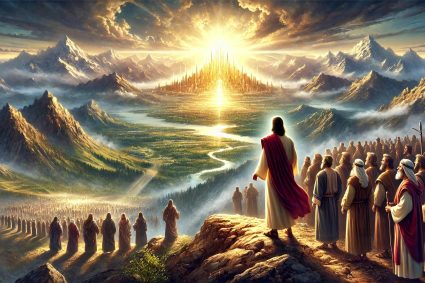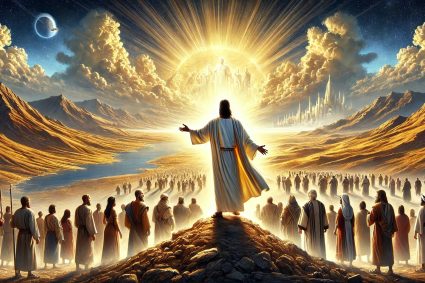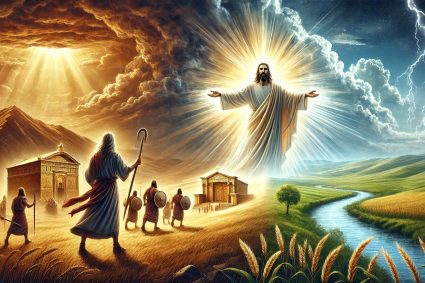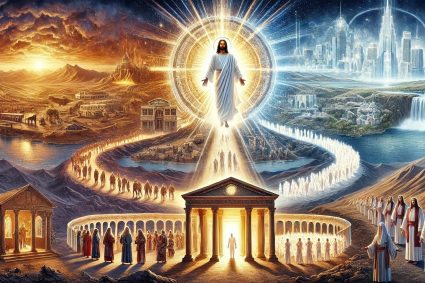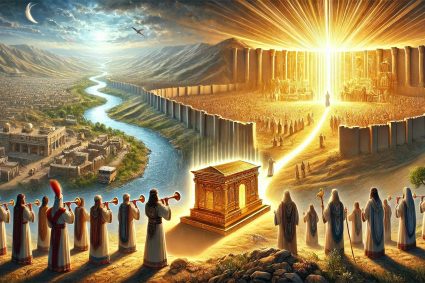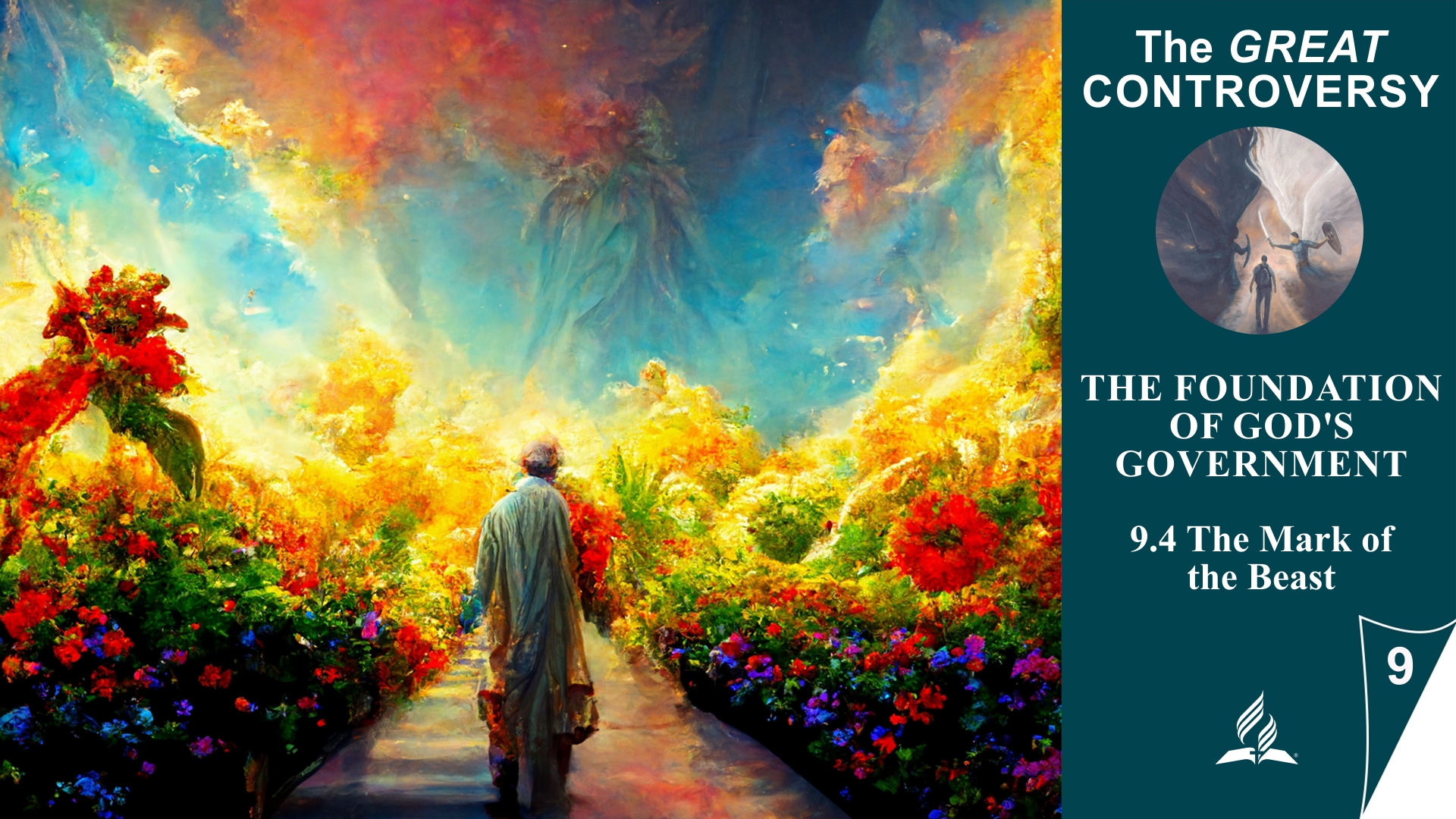


9.4 The Mark of the Beast
The End-Time Conflict: Loyalty to God’s Commandments versus the Mark of the Beast
Read Revelation 12:12, 17, and 13:7. How do these verses reveal Satan’s wrath? Why is the Devil so angry with God’s end-time people?
Revelation 12:12: “Therefore rejoice, you heavens and you who dwell in them! But woe to the earth and the sea, because the devil has gone down to you! He is filled with fury because he knows that his time is short.”
Revelation 12:17: “Then the dragon was enraged at the woman and went off to wage war against the rest of her offspring—those who keep God’s commands and hold fast their testimony about Jesus.”
Revelation 13:7: “It was given power to wage war against God’s holy people and to conquer them. And it was given authority over every tribe, people, language and nation.”
Satan’s Wrath Against God’s End-Time People
-
The Devil’s Wrath (Revelation 12:12)
-
Revelation 12:12 describes the devil’s great wrath because he knows his time is limited. This verse highlights the intensity of his hatred and his desperate efforts to cause as much harm as possible before his final judgment.
-
-
Attack on the Woman and Her Offspring (Revelation 12:17)
-
The dragon, symbolizing Satan, is angry with the woman who represents God’s church, and especially with her offspring. These offspring are described as those who keep God’s commandments and hold fast their testimony about Jesus. His wrath is directed specifically at those who remain faithful to God and follow His commandments.
-
-
War Against the Saints (Revelation 13:7)
-
Revelation 13:7 describes how Satan, through his allies—the beast from the sea and the beast from the earth—is given power to wage war against the saints. These saints are God’s end-time people who remain faithful to Him.
-
Why Is the Devil So Angry with God’s End-Time People?
-
Loyalty to God’s Commandments
-
God’s end-time people keep His commandments. This stands in direct opposition to Satan’s goal of undermining God’s law and authority. Their loyalty is a living testament to God’s power and justice, provoking Satan.
-
-
Testimony of Jesus
-
They hold fast to the testimony of Jesus, meaning they believe in Jesus Christ as their Savior and proclaim His gospel. This poses a direct threat to Satan’s kingdom, as the testimony of Jesus has the power to bring people out of darkness into light.
-
-
End-Time Conflict
-
Satan knows his time is limited. This realization escalates his efforts to thwart God’s plan and deceive and destroy as many people as possible. His increasing wrath and aggression against God’s end-time people are expressions of his desperate final attempts.
-
-
Cosmic Conflict
-
The entire context of Revelation 12 and 13 describes a cosmic conflict between good and evil. Satan’s wrath is a crucial part of this conflict as he battles against everything God has created and sanctified.
-
Conclusion
The relationship between Satan’s wrath and God’s end-time people reveals the intense spiritual battle that will take place in the last days. God’s people, who keep His commandments and hold fast the testimony of Jesus, are the focus of Satan’s wrath because they embody God’s principles and character in a world increasingly permeated by evil. Their faithfulness and testimony starkly contradict Satan’s rebellion and destruction, intensifying his hatred and attacks.
Read Revelation 13:4, 8, 12, 15 and 14:7, 9-11. (See also Revelation 15:4; 16:2; 19:20; 20:4; 22:9) What central theme emerges in all these verses?
Revelation 13:4, 8, 12, 15 and 14:7, 9-11: Central Theme of Worship
Revelation 13:4: “People worshiped the dragon because he had given authority to the beast, and they also worshiped the beast and asked, ‘Who is like the beast? Who can wage war against it?'”
Revelation 13:8: “All inhabitants of the earth will worship the beast—all whose names have not been written in the Lamb’s book of life, the Lamb who was slain from the creation of the world.”
Revelation 13:12: “It exercised all the authority of the first beast on its behalf, and made the earth and its inhabitants worship the first beast, whose fatal wound had been healed.”
Revelation 13:15: “The second beast was given power to give breath to the image of the first beast, so that the image could speak and cause all who refused to worship the image to be killed.”
Revelation 14:7: “He said in a loud voice, ‘Fear God and give him glory, because the hour of his judgment has come. Worship him who made the heavens, the earth, the sea and the springs of water.'”
Revelation 14:9-11: “A third angel followed them and said in a loud voice: ‘If anyone worships the beast and its image and receives its mark on their forehead or on their hand, they, too, will drink the wine of God’s fury, which has been poured full strength into the cup of his wrath. They will be tormented with burning sulfur in the presence of the holy angels and of the Lamb. And the smoke of their torment will rise forever and ever. There will be no rest day or night for those who worship the beast and its image, or for anyone who receives the mark of its name.'”
Additional Relevant Verses:
Revelation 15:4: “Who will not fear you, Lord, and bring glory to your name? For you alone are holy. All nations will come and worship before you, for your righteous acts have been revealed.”
Revelation 16:2: “The first angel went and poured out his bowl on the land, and ugly, festering sores broke out on the people who had the mark of the beast and worshiped its image.”
Revelation 19:20: “But the beast was captured, and with it the false prophet who had performed the signs on its behalf. With these signs he had deluded those who had received the mark of the beast and worshiped its image. The two of them were thrown alive into the fiery lake of burning sulfur.”
Revelation 20:4: “I saw thrones on which were seated those who had been given authority to judge. And I saw the souls of those who had been beheaded because of their testimony about Jesus and because of the word of God. They had not worshiped the beast or its image and had not received its mark on their foreheads or their hands. They came to life and reigned with Christ a thousand years.”
Revelation 22:9: “But he said to me, ‘Don’t do that! I am a fellow servant with you and with your fellow prophets and with all who keep the words of this scroll. Worship God!'”
Central Theme: True and False Worship
The central theme highlighted in all these verses is worship. People either worship the Creator or they worship the beast and its image. There is a clear contrast between true worship of God, the Creator, and false worship of the beast, inspired by the dragon (Satan).
Contrast and Conflict:
-
True Worship: True worship is directed to God, the Creator of heaven and earth (Revelation 14:7). This worship is practiced by those who keep God’s commandments and hold the testimony of Jesus (Revelation 12:17; 14:12).
-
False Worship: False worship is directed to the beast and its image (Revelation 13:4, 8, 12, 15). This worship is practiced by those whose names are not written in the Lamb’s book of life (Revelation 13:8). The beast and its image symbolize earthly powers and false religious systems that attempt to divert worship from God to themselves.
Historical Context and Prophecy:
-
Daniel 7 and Revelation 13: Comparing with Daniel 7, the beast from the earth in Revelation 13 is the same as the little horn that tries to change God’s law (Daniel 7:25). The attempt to shift the day of worship from Saturday to Sunday is seen as an effort to undermine divine authority.
-
End-Time Conflict: The final conflict revolves around true and false worship. Revelation identifies the faithful as those who keep God’s commandments, including the Sabbath (Revelation 12:17; 14:12). Those who worship the beast and its image and accept the mark of the beast will face God’s judgment (Revelation 14:9-11).
Conclusion
The dispute between Christ and Satan began in heaven and revolves around worship. Satan covets the worship that belongs only to God and seeks to obtain this worship through the actions of the beast from the earth. The Sabbath plays a central role in this conflict as a sign of true worship of the Creator. Revelation calls believers to stand faithfully with God, keep His commandments, and worship Him alone.
Connection with Our Daily Life and Faith: The Sabbath and the Law
The Sabbath and the Law of God are deeply intertwined with our daily life and faith. They form the foundation of our understanding of God’s purposes for us as His creations. Here are some central thoughts that highlight the connection to daily life and faith:
-
Remembrance of Creation:
-
The Sabbath reminds us weekly that God created the world in six days and rested on the seventh day. This strengthens our awareness of divine creation and our place within it.
-
-
Rest and Renewal:
-
In the hectic pace of daily life, the Sabbath offers a weekly day of rest, allowing us to be physically and spiritually renewed. It is a time to detach from daily work and focus on our relationship with God.
-
-
Sanctification of the Sabbath:
-
By observing the Sabbath, we follow a central commandment of God. This strengthens our discipline in faith and demonstrates our loyalty to God’s instructions.
-
-
Symbol of Faithfulness:
-
The Sabbath is a sign of our faithfulness to God. In a world that often has different values and priorities, the Sabbath reminds us to follow God’s commandments and give Him the highest honor.
-
Central Thoughts on the End-Time Conflict: Faithfulness to God’s Commandments versus the Mark of the Beast
Satan’s Wrath Against God’s End-Time People:
-
Revelation 12:12: Satan’s great wrath stems from knowing his time is limited. He desperately tries to cause as much harm as possible.
-
Revelation 12:17: The dragon is especially angry with the descendants of the woman who keep God’s commandments and hold the testimony of Jesus.
-
Revelation 13:7: Satan, through his allies, wages war against the saints, God’s end-time people who stand faithful to God.
The Devil’s Wrath:
-
Faithfulness to God’s Commandments: The end-time people keep God’s commandments, counteracting Satan’s goal to undermine God’s law.
-
Testimony of Jesus: Faith in Jesus Christ and proclaiming His gospel threaten Satan’s kingdom.
-
End-Time Conflict: The limited time drives Satan to escalate his efforts to thwart God’s plan.
-
Cosmic Conflict: Satan’s wrath is part of the great conflict between good and evil.
Central Theme of Worship:
-
True Worship: True worship is directed towards God, the Creator of heaven and earth (Revelation 14:7).
-
False Worship: False worship is directed towards the beast and its image (Revelation 13:4, 8, 12, 15).
Conclusion: Key Thought of the Day
“The Sabbath is a weekly sign of our faithfulness to God, reminding us that we were created to live in His rest and worship.”
This thought underscores the deep connection between the Sabbath, God’s law, and our daily faith life, encouraging us to remain faithful amidst the end-time conflict.
Visited 63 times, 1 visit(s) today

